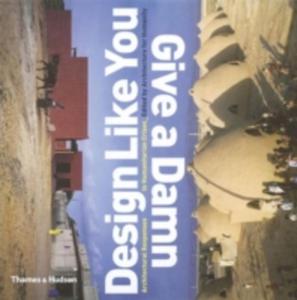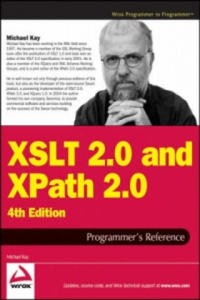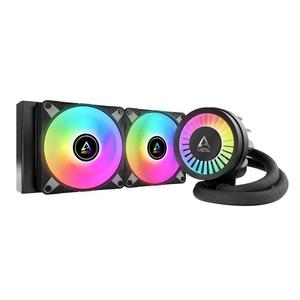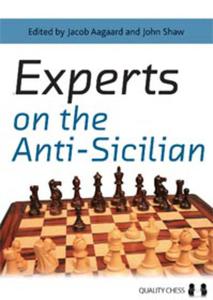libristo design like you give a damn 2 4460960
- znaleziono 11 produktów w 9 sklepach
Design Like You Give A Damn 2
Książki Obcojęzyczne>Angielskie>The arts>Architecture>Architectural structure & design>Environmentally-friendly architecture & designKs...
0x0137196a00000000
Sklep: Gigant.pl
Design Like You Give A Damn
Książki Obcojęzyczne>Angielskie>The arts>Architecture
0x014029db00000000
Sklep: Gigant.pl
BIOLOGY A GLOBAL APPROACH GLOBAL EDITION NOWA URRY WYDAWCA
Podręczniki, artykuły szkolne > Podręczniki do szkół podst. i średnich
Biology: A Global Approach, Global Edition Biology: A Global Approach delivers a trusted, accurate, current, and pedagogically innovative experience that guides students to a true understanding of biology. The author team advances Neil Campbell
Sklep: ksiazkitanie.pl
XSLT 2.0 and XPath 2.0 Programmer's Reference 4e John Wiley & Sons Inc
Książki / Literatura obcojęzyczna
This book is primarily a practical reference book for professional XSLT developers. It assumes no previous knowledge of the language, and many developers have used it as their first introduction to XSLT; however, it is not structured as a tutorial, and there are other books on XSLT that provide a gentler approach for beginners. The book does assume a basic knowledge of XML, HTML, and the architecture of the Web, and it is written for experienced programmers. There's no assumption that you know any particular language such as Java or Visual Basic, just that you recognize the concepts that all programming languages have in common. The book is suitable both for XSLT 1.0 users upgrading to XSLT 2.0, and for newcomers to XSLT. The book is also equally suitable whether you work in the Java or .NET world. As befits a reference book, a key aim is that the coverage should be comprehensive and authoritative. It is designed to give you all the details, not just an overview of the 20 percent of the language that most people use 80 percent of the time.It's designed so that you will keep coming back to the book whenever you encounter new and challenging programming tasks, not as a book that you skim quickly and then leave on the shelf. If you like detail, you will enjoy this book; if not, you probably won't. But as well as giving the detail, this book aims to explain the concepts, in some depth. It's therefore a book for people who not only want to use the language but who also want to understand it at a deep level. The book aims to tell you everything you need to know about the XSLT 2.0 language. It gives equal weight to the things that are new in XSLT 2.0 and the things that were already present in version 1.0. The book is about the language, not about specific products. However, there are appendices about Saxon (the author's own implementation of XSLT 2.0), about the Altova XSLT 2.0 implementation, and about the Java and Microsoft APIs for controlling XSLT transformations, which will no doubt be upgraded to handle XSLT 2.0 as well as 1.0. A third XSLT 2.0 processor, Gestalt, was released shortly before the book went to press, too late to describe it in any detail. But the experience of XSLT 1.0 is that there has been a very high level of interoperability between different XSLT processors, and if you can use one of them, then you can use them all.In the previous edition we split XSLT 2.0 and XPath 2.0 into separate volumes. The idea was that some readers might be interested in XPath alone. However, many bought the XSLT 2.0 book without its XPath companion and were left confused as a result; so this time, the material is back together. The XPath reference information is in self-contained chapters, so it should still be accessible when you use XPath in contexts other than XSLT. The book does not cover XSL Formatting Objects, a big subject in its own right. Nor does it cover XML Schemas in any detail. If you want to use these important technologies in conjunction with XSLT, there are other books that do them justice. This book contains twenty chapters and eight appendixes (the last of which is a glossary) organized into four parts. The following section outlines what you can find in each part, chapter, and appendix. Part I: Foundations: The first part of the book covers essential concepts. You should read these before you start coding.If you ignore this advice, as most people do, then you read them when you get to that trough of despair when you find it impossible to make the language do anything but the most trivial tasks. XSLT is different from other languages, and to make it work for you, you need to understand how it was designed to be used. Chapter 1: XSLT in Context: This chapter explains how XSLT fits into the big picture: how the language came into being and how it sits alongside other technologies. It also has a few simple coding examples to keep you alert. Chapter 2: The XSLT Processing Model: This is about the architecture of an XSLT processor: the inputs, the outputs, and the data model. Understanding the data model is perhaps the most important thing that distinguishes an XSLT expert from an amateur; it may seem like information that you can't use immediately, but it's knowledge that will stop you making a lot of stupid mistakes. Chapter 3: Stylesheet Structure: XSLT development is about writing stylesheets, and this chapter takes a bird's eye view of what stylesheets look like.It explains the key concepts of rule-based programming using templates, and explains how to undertake programming-in-the-large by structuring your application using modules and pipelines. Chapter 4: Stylesheets and Schemas: A key innovation in XSLT 2.0 is that stylesheets can take advantage of knowledge about the structure of your input and output documents, provided in the form of an XML Schema. This chapter provides a quick overview of XML Schema to describe its impact on XSLT development. Not everyone uses schemas, and you can skip this chapter if you fall into that category. Chapter 5: The Type System: XPath 2.0 and XSLT 2.0 offer strong typing as an alternative to the weak typing approach of the 1.0 languages. This means that you can declare the types of your variables, functions, and parameters, and use this information to get early warning of programming errors. This chapter explains the data types available and the mechanisms for creating user-defined types. Part II: XSLT and XPath Reference: This section of the book contains reference material, organized in the hope that you can easily find what you need when you need it.It's not designed for sequential reading, though you might well want to leaf through the pages to discover what's there. Chapter 6: XSLT Elements: This monster chapter lists all the XSLT elements you can use in a stylesheet, in alphabetical order, giving detailed rules for the syntax and semantics of each element, advice on usage, and examples. This is probably the part of the book you will use most frequently as you become an expert XSLT user. It's a "no stone unturned" approach, based on the belief that as a professional developer you need to know what happens when the going gets tough, not just when the wind is in your direction. Chapter 7: XPath Fundamentals: This chapter explains the basics of XPath: the low-level constructs such as literals, variables, and function calls. It also explains the context rules, which describe how the evaluation of XPath expressions depends on the XSLT processing context in which they appear. Chapter 8: XPath: Operators on Items: XPath offers the usual range of operators for performing arithmetic, boolean comparison, and the like.However, these don't always behave exactly as you would expect, so it's worth reading this chapter to see what's available and how it differs from the last language that you used. Chapter 9: XPath: Path Expressions: Path expressions are what make XPath special; they enable you to navigate around the structure of an XML document. This chapter explains the syntax of path expressions, the 13 axes that you can use to locate the nodes that you need, and associated operators such as union, intersection, and difference. Chapter 10: XPath: Sequence Expressions: Unlike XPath 1.0, in version 2.0 all values are sequences (singletons are just a special case). Some of the most important operators in XPath 2.0 are those that manipulate sequences, notably the "for" expression, which translates one sequence into another by applying a mapping. Chapter 11: XPath: Type Expressions: The type system was explained in Chapter 5; this chapter explains the operations that you can use to take advantage of types. This includes the "cast" operation which is used to convert values from one type to another.A big part of this chapter is devoted to the detailed rules for how these conversions are done.Chapter 12: XSLT Patterns: This chapter returns from XPath to a subject that's specific to XSLT. Patterns are used to define template rules, the essence of XSLT's rule-based programming approach. The reason for explaining them now is that the syntax and semantics of patterns depends strongly on the corresponding rules for XPath expressions. Chapter 13: The Function Library: XPath 2.0 includes a library of functions that can be called from any XPath expression; XSLT 2.0 extends this with some additional functions that are available only when XPath is used within XSLT. The library has grown immensely since XPath 1.0. This chapter provides a single alphabetical reference for all these functions. Chapter 14: Regular Expressions: Processing of text is an area where XSLT 2.0 and XPath 2.0 are much more powerful than version 1.0, and this is largely through the use of constructs that exploit regular expressions. If you're familiar with regexes from languages such as Perl, this chapter tells you how XPath regular expressions differ. If you're new to the subject, it explains it from first principles.Chapter 15: Serialization: Serialization in XSLT means the ability to generate a textual XML document from the tree structure that's manipulated by a stylesheet. This isn't part of XSLT processing proper, so (following W3C's lead) it's separated it into its own chapter. You can control serialization from the stylesheet using an declaration, but many products also allow you to control it directly via an API. Part III: Exploitation: The final section of the book is advice and guidance on how to take advantage of XSLT to write real applications. It's intended to make you not just a competent XSLT coder, but a competent designer too. The best way of learning is by studying the work of others, so the emphasis here is on practical case studies. Chapter 16: Extensibility: This chapter describes the "hooks" provided in the XSLT specification to allow vendors and users to plug in extra functionality. The way this works will vary from one implementation to another, so we can't cover all possibilities, but one important aspect that the chapter does cover is how to use such extensions and still keep your code portable.Chapter 17: Stylesheet Design Patterns: This chapter explores a number of design and coding patterns for XSLT programming, starting with the simplest "fill-in-the-blanks" stylesheet, and extending to the full use of recursive programming in the functional programming style, which is needed to tackle problems of any computational complexity. This provides an opportunity to explain the thinking behind functional programming and the change in mindset needed to take full advantage of this style of development. Chapter 18: Case Study: XMLSpec: XSLT is often used for rendering documents, so where better to look for a case study than the stylesheets used by the W3C to render the XML and XSLT specifications, and others in the same family, for display on the web? The resulting stylesheets are typical of those you will find in any publishing organization that uses XML to develop a series of documents with a compatible look-and-feel. Chapter 19: Case Study: A Family Tree: Displaying a family tree is another typical XSLT application.This example with semi-structured data-a mixture of fairly complex data and narrative text-that can be presented in many different ways for different audiences. It also shows how to tackle another typical XSLT problem, conversion of the data into XML from a legacy text-based format. As it happens, this uses nearly all the important new XSLT 2.0 features in one short stylesheet. But another aim of this chapter is to show a collection of stylesheets doing different jobs as part of a complete application. Chapter 20: Case Study: Knight's Tour: Finding a route around a chessboard where a knight visits every square without ever retracing its steps might sound a fairly esoteric application for XSLT, but it's a good way of showing how even the most complex of algorithms are within the capabilities of the language. You may not need to tackle this particular problem, but if you want to construct an SVG diagram showing progress against your project plan, then the problems won't be that dissimilar. Part IV: Appendices: A ppendix A: XPath 2.0 Syntax Summary: Collects the XPath grammar rules and operator precedences into one place for ease of reference.Appendix B: Error Codes: A list of all the error codes defined in the XSLT and XPath language specifications, with brief explanations to help you understand what's gone wrong. Appendix C: Backward Compatibility: The list of things you need to look out for when converting applications from XSLT 1.0. Appendix D: Microsoft XSLT Processors: Although the two Microsoft XSLT processors don't yet support XSLT 2.0, we thought many readers would find it useful to have a quick summary here of the main objects and methods used in their APIs. Appendix E: JAXP: the Java API for XML Processing: JAXP is an interface rather than a product. Again, it doesn't have explicit support yet for XSLT 2.0, but Java programmers will often be using it in XSLT 2.0 projects, so the book includes an overview of the classes and methods available. Appendix F: Saxon: At the time of writing Saxon (developed by the author of this book) provides the most comprehensive implementation of XSLT 2.0 and XPath 2.0, so its interfaces and extensions are covered in some detail. Appendix G: Altova: Altova, the developers of XML Spy, have an XSLT 2.0 processor that can be used either as part of the development environment or as a freestanding component.This appendix gives details of its interfaces. Appendix H: Glossary Note: CD-ROM/DVD and other supplementary materials are not included as part of eBook file.
Sklep: Libristo.pl
Emaga CPU COOLER S_MULTI/ACFRE00142A ARCTIC
empty
Liquid Freezer III 240 A-RGB Multi Compatible All-in-One CPU Water Cooler with A-RGB Ready Out-of-the-Box - Easy Installation The Liquid Freezer III is ready for immediate use thanks to its pre-installed radiator fans in push configuration. The fan cables are integrated into the jacket of the hoses so that only one cable needs to be connected to the motherboard. With the MX-6 thermal compound included in delivery, you have everything you need for quick and easy installation. Future-Proof Compatibility The Liquid Freezer III is multi-compatible with Intel and AMD sockets. Intel will release the new Arrow Lake processors on the LGA1851 socket in the future. ARCTIC customers don't need to worry that the new CPUs will also require new coolers. We guarantee full compatibility. All Liquid Freezer III can be used with the new LGA1851 socket from Intel without limitation. Silent and Powerful VRM Fan The voltage converters of motherboards often work at their maximum temperature in combination with power-hungry CPUs. To compensate the lack of airflow from a tower cooler, the Liquid Freezer III works with a revised VRM fan. The 60 mm PWM-controlled fan enables almost silent cooling of the socket area when VRM cooling is insufficient, in cases with poor airflow or especially in overclocking scenarios. This enables a continuously higher load and a longer service life for the voltage converters. Contact Frame for Intel LGA1700 and LGA1851 Intel's Independent Loading Mechanism (ILM) deforms the CPU by pressing it into the socket at two points with over 40 kg. This causes pressure in the PCB, the die and the solder layer between the die and IHS (Integrated Heat Spreader). With high thermal load, this can lead to long-term problems. The patent-pending mounting frame from ARCTIC does not deform the CPU, reduces the mechanical load on the CPU massively, is quick and easy to install and allows the cooler to be screwed onto the CPU's backplate. As a result, mechanical stress on the mainboard and CPU is minimised, cooling performance remains consistent and installation is quick and uncomplicated. Optimised, In-House Developed Water Pump The Liquid Freezer III is equipped with a specially developed PWM-controlled water pump, which has been further optimised in terms of both performance and noise. Thanks to the improved coldplate with an extended fin surface and optimised water pipes, the Liquid Freezer III increases its performance while maintaining quiet operation. Complete Control or Simple Control Two connection cables - two control options: Separate regulation: By using the splitter cable with three separate connections, the pump, VRM fan and radiator fan can be controlled independently of each other. This allows, for example, the speed of the VRM fan to be controlled independently of the CPU and to be adjusted analogue to the temperature of the voltage converters via PWM. All-in-One: Like the Liquid Freezer II, this allows the entire unit to be controlled via a single connection, whereby the speed of the radiator fans is output. The pump, VRM and radiator fans can therefore be easily controlled via a single PWM setting. Native AMD Offset Mounting For several generations, AMD has been using a multi-die chiplet design for its Ryzen desktop processors. Unlike Intel CPUs, the hotspot on these processors is not located centrally under the IHS (Integrated Heat Spreader), but is slightly offset. The AMD mounting solution therefore has a 5 mm offset in order to achieve optimum heat dissipation. Improved Radiator Design The cooling surface of the 38 mm thick radiator has been extended by 23 % by increasing the fin stack. This not only enables improved heat dissipation, but also a larger liquid volume. Consequently, the heat build-up in the water cooling system is slowed down and power and temperature peaks can be effectively managed over a longer period of time. High Static Pressure ARCTIC relies on the well-proven P fans, which have already received several awards for their outstanding performance. The P series is particularly suitable for use on heat sinks and radiators with a high fin density. Thanks to their high static pressure, they achieve significantly better results compared to fans designed for high air circulation. Limited Compatibility with Few Motherboards Some motherboards are incompatible with the Liquid Freezer III due to oversized SSD coolers in the M.2_1 slot. We provide a suitable M.2 cooler free of charge for affected motherboards. Addressable LEDs for all Requirements ARCTIC uses standardised 3-pin cables instead of proprietary connectors. This not only ensures compatibility with most lighting systems for motherboards, cases, controllers and accessories, but also enables software-based control with the most common control programmes. The daisy-chain function also ensures that each LED can display an individual colour at any time, offering countless combination options for every preference. Wide Range of Variants The Liquid Freezer III offers outstanding cooling performance in four different sizes and three variants. While the Black version is completely black, the A-RGB versions are available in black or white and have digitally addressable lighting for the pump head and radiator fans. With radiator sizes of 240, 360, 280 and 420, the Liquid Freezer III offers the ideal combination of performance, technology and design for everyone! Quality You Can Rely On To ensure the longevity of our products, we carry out long-term tests under different, sometimes very adverse conditions. In this way, we learn how we can permanently improve our products for our customers. In addition, the excellent results of long-term testing give us the assurance that our products are not only outstanding in terms of quality, but also in terms of durability. This is a certainty that we are happy to pass on to our customers, which is why we give a 6-year manufacturer's guarantee.
Sklep: emaga.pl
Change Your Life With Emotional Intelligence John Murray Press
Książki / Literatura obcojęzyczna
Is this the right book for me? Boost emotional awareness in any part of your life Change Your Life with Emotional Intelligence takes Daniel Goleman's revolutionary psychological theory and transforms it into practical self-help for you to boost emotional awareness in any part of your life. It introduces you to the principles of EI, explaining why the qualities of assertiveness, perception, motivation etc really matter if you want to live a fulfilled and successful life. The book takes an applied approach, encouraging you first to understand your own emotional identity, then to develop life skills like developing a sense of responsibility, overcoming anger and being more assertive. It will help you to use these skills to transform relationships with those around you, either in the workplace or in personal relationships and will even offer insight into how to help your children develop emotional intelligence. It is full of interactive exercises, top tips and and motivational quotes and offers plenty of further resources.Change Your Life With Emotional Intelligence includes: Part one - Understanding emotional intelligence Chapter 1: Emotional intelligence: a first look Chapter 2: Why is emotional intelligence so important? Part two - Emotional intelligence and you: becoming personally competent Chapter 3: How do you see yourself Chapter 4: Thinking straight Chapter 5: Developing your personal core values Chapter 6: Emotional intelligence and resilience Chapter 7: Using emotional intelligence to defeat anger Part three - Emotional intelligence and others Chapter 8: Social responsibility Chapter 9: Developing communication skills Chapter 10: Emotional intelligence in the workplace Chapter 11: Emotional intelligence within an intimate relationship Chapter 12: Developing emotionally intelligent children Learn effortlessly with a new easy-to-read page design and interactive features: Not got much time? One, five and ten-minute introductions to key principles to get you started. Author insights Lots of instant help with common problems and quick tips for success, based on the author's many years of experience. Test yourself Tests in the book and online to keep track of your progress.Extend your knowledge Extra online articles to give you a richer understanding of the subject. Five things to remember Quick refreshers to help you remember the key facts. Try this Innovative exercises illustrate what you've learnt and how to use it.
Sklep: Libristo.pl
Experts on the Anti-Sicilian by Jacob Aagaard John Shaw (miękka okładka)
Szachy > Debiuty
Wersja językowa książki - angielska. Miękka okładka. The Sicilian Defense, 1.e4 c5, is one of the popular chess openings. In this book several chess grandmasters present state-of-the-art analysis of lines where White meets the Sicilian by avoiding the Open variations. The editors, 2007 British Champion GM Jacob Aagaard and three-time Scottish Champion GM John Shaw, have recruited a line-up of strong chess grandmasters to share their expert opinions both on how to play the Sicilian Defense and how to play against it. Jacob Aagaard is a chess grandmaster and ex-British Champion. John Shaw is a chess grandmaster and three-time Scottish Champion.ISBN 978-1-906552-80-0 - 440 pages - Published 8 April 2011Reviews"This extremely useful book brings in a host of well-known chess writers to find the best ways to deal with all the very annoying anti-Sicilian lines that players of all ratings use to avoid main line Sicilians. Great research, hard work, and computer help not only leads to great analysis, but also to a number of important theoretical novelties... Let's jump to the point: I don't know how any Sicilian player worth his salt (from 1500 to grandmaster) can do without this book!" IM Jeremy Silman "The book is full of such inspired and well-explained lines and ideas, though not all of the chapters are equally entertaining and fresh. For instance, Jacob Aagaard's chapter on the Alapin Variation (1.e4 c5 2.c3) looks very solid and well-researched, and Aagaard clearly strives to give correct lines rather than funny ones. Likewise, Christian Bauer's chapters on various 2.Nf3, 3.c3 systems make a reliable impression...If you want to have fun with the Anti-Sicilians, The Rossolimo Variation and Experts on the Anti-Sicilian provide excellent study material. My own preference is for the latter - it seems more objective, more diverse and more up to date." Arne Moll , Chess Vibes (full review) "There's a lot of very interesting ideas and analysis to be found in this book... I like the style of the book. There is a very good balance between prose and analysis and it should appeal to a variety of different types of player... Sicilian players will definitely find this volume of great interest. For me, it's the pick of the bunch of this month's opening round up." Sean Marsh (full review)"Experts on the Anti-Sicilian is a book that is going to sell a lot of copies and deservedly so... One of the highlights of the book is Jacob Aagaard's 60 page answer to 2.c3 Sicilian... There are many opening novelties in this book... Highly Recommended" IM John Donaldson "Like all books from Quality Chess, this is a pleasure to handle and use: the production values are excellent: pleasing design, good paper, ample diagrams. The only minus point I can think of in this respect is that the book will weigh rather heavy in your suitcase!Another first-class product from Quality Chess. Serious players who play or face the Sicilian will find a great deal of useful information here, well organised and well explained. *****" Phil Adams
Sklep: Imperiumzabawek.pl
SPARKLING INFLATABLE REMOTE VIBRATOR ISABELLA Dream Toys
Kategorie > Gadżety erotyczne > penisy, dilda > plugi > wibrujące
There
Sklep: Sekrecik
SPARKLING INFLATABLE REMOTE VIBRATOR ISABELLA *boss of toys
DLA NIEJ>AKCESORIA ANALNE>KORKI ANALNE
There
Sklep: Przemile
WRL LHG LTE18 KIT/LHGGMEG18-EA MIKROTIK MIKROTIK
Produkty sieciowe > Networking > Wireless equipment > Outdoor Networking
Like the previous LHG LTE models, this is a last mile-internet solution for situations when even your phone might not have any signal. The new LHG comes with a cutting-edge Category 18 LTE modem ndash; for the fastest mobile internet no matter where you are. This kit supports speeds up to one Gbps! Due to its large high-gain 17 dBi antenna, LHG LTE18 kit can connect to cell towers in extreme rural locations where nothing else is available. There is a massive heat sink, so you donrsquo;t have to worry about overheating. The grid antenna design can withstand harsh, windy weather. And it can be mounted in different ways, including poles and masts. The LHG LTE18 kit features a 1.2 Gbps CAT18 LTE modem, which enables carrier aggregation and allows the device to use multiple bands at the same time. That is a huge advantage when there are a lot of LTE users in the area. It provides better responsiveness in a crowded environment and higher efficiency for weaker signal situations in the countryside. If yoursquo;re competing for traffic in a place with poor connectivity, the new LHG will give you the upper hand. We have seen internet speed doubling in rural areas after switching to carrier aggregation, so there is no need to wait for cable network expansions Therersquo;s a mighty high-gain antenna inside that supports a variety of LTE bands. It goes as high as 2.7 GHz. And it offers extensive low frequency coverage as well. Keep in mind that the device only supports 2x2 DL MIMO as the LHG has only 2 antenna ports. Yoursquo;ll be using the Gigabit Ethernet port with PoE-in for powering from an ethernet switch. But wersquo;ve included an injector as well. Therersquo;s a standard MicroSIM slot for LTE connectivity. And at the heart of this useful gadget, we have a powerful 64 bit dual-core ARM CPU.
Sklep: Kemot-komputery.pl
SPARKLING INFLATABLE REMOTE VIBRATOR ISABELLA boss of toys
Analne>Z Wibracjami
There
Sklep: eRozkosz.pl
Sklepy zlokalizowane w miastach: Warszawa, Kraków, Łódź, Wrocław, Poznań, Gdańsk, Szczecin, Bydgoszcz, Lublin, Katowice
Szukaj w sklepach lub całym serwisie
1. Sklepy z libristo pl design like you give a damn 2 4460960
2. Szukaj na wszystkich stronach serwisu
t1=0.031, t2=0, t3=0, t4=0.017, t=0.031











